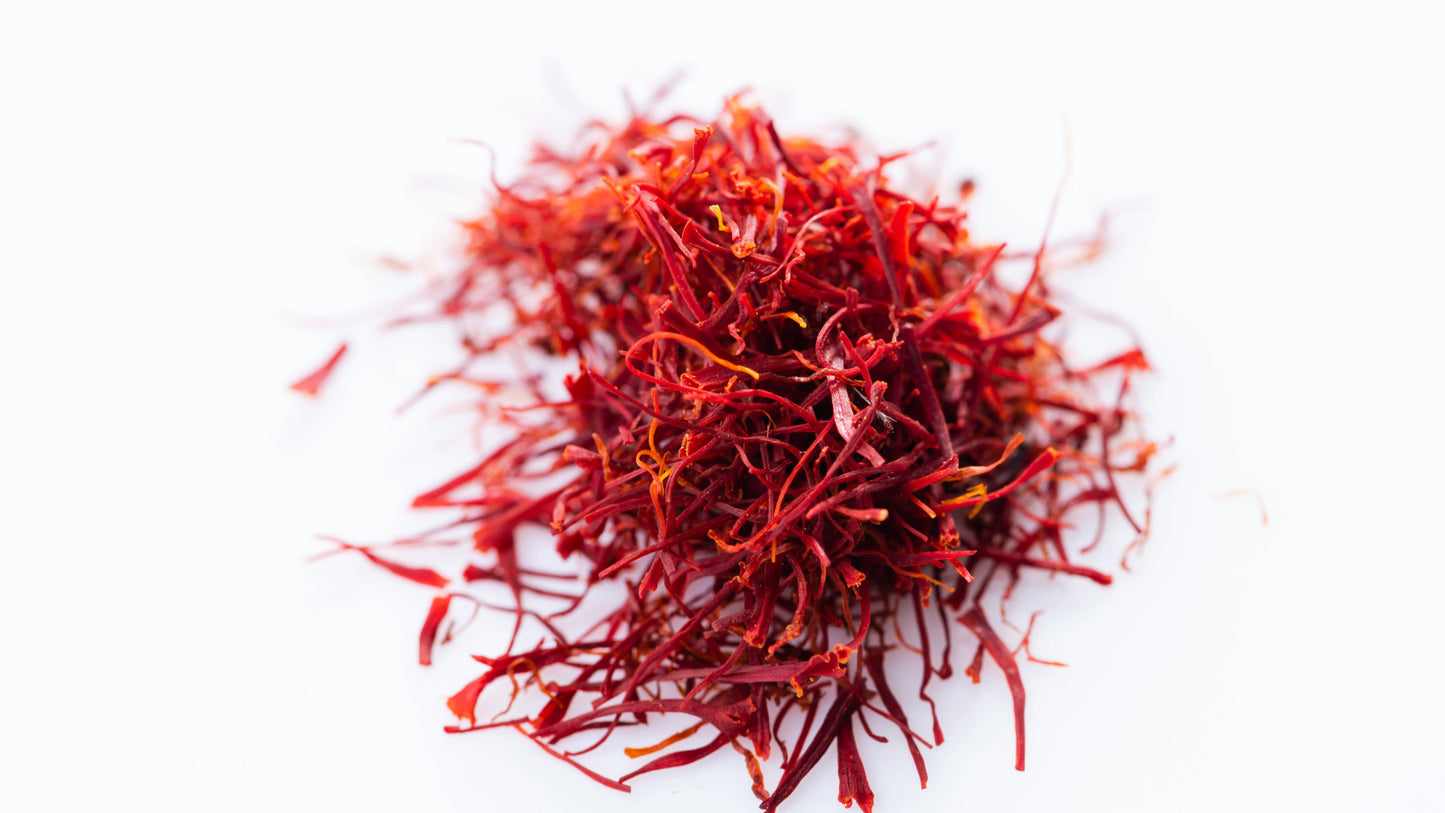Offer
Provide additional details about the offer you're running.

Saffron, often hailed as "red gold" and the "queen of all spices," carries not just a rich history but also a value that surpasses its weight in gold. Our journey into the heart of saffron begins with a closer look at this exquisite spice, which has graced the tables and traditions from the times of Cleopatra and Alexander the Great to the modern culinary world.
Originating from the saffron crocus flower, saffron boasts a legacy that is believed to have started in ancient Greece. Today, it flourishes in the arid climates of countries like Afghanistan, India, Iran, Greece, and Morocco, with Iran's semi-arid lands providing an ideal environment for cultivating this prized spice.
What makes saffron the most expensive spice in the world? The answer lies in its labor-intensive harvesting process. Each saffron crocus flower yields only three stigmas, necessitating about 80,000 flowers to produce a single pound of saffron. This painstaking collection process, where every stigma is handpicked and processed, underlines the immense labor of love behind each pinch of saffron that enhances dishes worldwide.
Saffron is celebrated for its sweet, floral taste, imparting an earthy and complex nuance to dishes. This unique flavor profile distinguishes authentic saffron from its bitter, metallic-tasting imitations. Some of the most beloved saffron-infused dishes include Spanish Seafood Paella, Saffron Shrimp Succotash, and Saffron Buttermilk Lemon Pie, showcasing saffron's versatility in enhancing both savory and sweet recipes.
With saffron's high value, the market is rife with adulterated products. Authentic saffron should exhibit a deep red color with orange or yellow tips, signaling its purity and quality. To distinguish genuine saffron from lower-quality or adulterated products, two simple at-home tests can be conducted:
Sight Test: Soak a few threads in hot water for 5 to 20 minutes. Genuine saffron will retain its integrity and color the water uniformly yellow, unlike fake saffron, which bleeds artificial dye and disintegrates.
Taste Test: Authentic saffron will have a floral and earthy taste, while fake saffron lacks flavor or tastes bitter and metallic.
Saffron's benefits extend beyond the kitchen. For centuries, it has been used in traditional medicine across various cultures to treat ailments such as asthma, cough, heartburn, and more. Modern studies have begun to explore saffron's potential as a natural mood enhancer, acknowledging its calmative, anti-inflammatory, and antidepressant effects.
Our dedication at Dorreen Saffron to providing premium, hand-harvested saffron is rooted in our commitment to quality and authenticity. As the "queen of spices," saffron not only enriches culinary creations but also offers a gateway to exploring the rich tapestry of flavors and health benefits it brings.
Dive deeper into the world of saffron by visiting our blog, where we explore everything from its historical significance to practical tips for ensuring you're enjoying the best quality saffron in your dishes. Let's celebrate the legacy and luxury of saffron together, bringing a touch of ancient tradition to our modern tables.
Discover more and elevate your culinary experiences with the unmatched flavor and aroma of authentic saffron.